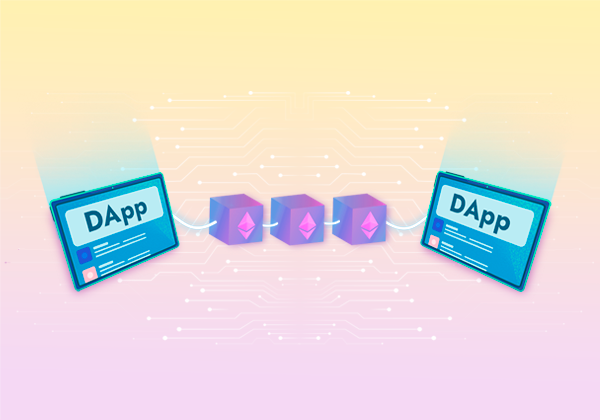
What is a Consensus Algorithm, and Why Does Cryptocurrency Need It?
Within the digital currency landscape, consensus algorithms stand as a fundamental pillar, guaranteeing secure and streamlined transactions in a decentralized environment. But what is the essence of a consensus algorithm, and why is it indispensable for the operation of cryptocurrencies? In this article, we will unravel the complexities of consensus algorithms, elucidating their function, relevance, and various forms.
We will examine how consensus algorithms underpin the two most prominent mechanisms, Proof-of-Work and Proof-of-Stake, and discuss their significance in preserving the stability of cryptocurrency networks.
What is a Consensus Algorithm?
Consensus algorithms act as a coordination mechanism for users and programs within a distributed network. They ensure that all network participants agree on the current data state, even if some nodes experience failure. In essence, consensus maintains the system's fault tolerance.
In a centralized structure, a single entity holds authority over the entire system. Generally, these entities possess the power to make changes at their discretion without needing a complex control system for consensus among multiple administrators.
In contrast, the operational mechanism in a decentralized environment is quite distinct. For instance, when dealing with a distributed database, how can consensus be achieved among all network members regarding the data to be added to the network?
Achieving consensus in a setting where parties cannot inherently trust each other has been a pivotal advancement in the industry, paving the way for blockchain technology. In this article, we examine the significance of consensus algorithms for the smooth operation of cryptocurrencies and distributed ledgers.
Why Does Cryptocurrency Need a Consensus Algorithm?
In crypto networks, user balances are stored in a blockchain database. Every user (node) needs the same copy of the database to maintain reliability and transparency.
Public-key cryptography protects your coins from unauthorized access, but users need a way to verify if funds are spent. Bitcoin's creator, Satoshi Nakamoto, proposed the Proof-of-Work system for network coordination, which we'll discuss later.
Most consensus algorithms share some features. Validators wanting to add blocks must provide a stake (e.g., processing power, cryptocurrency, or reputation) to ensure fairness. If they cheat, they lose their stake. Validators risk resources for performance rewards, usually in native protocol tokens, funded by user fees and cryptocurrency underpinning.
Transparency is another key feature, making it easy to detect fraud. Creating blocks should be costly, but verifying the work should be cheap and accessible. This way, anyone can check and monitor validator activities.
Types of a Consensus Algorithm
As we delve into the realm of blockchain algorithms, it's essential to understand that various types have emerged to address the specific needs and challenges of diverse blockchain networks. In this section, we will explore the fundamental characteristics of different consensus algorithms in blockchain and highlight their unique advantages and limitations.
Proof-of-Work
Proof-of-Work (PoW) is the foundation for other blockchain consensus mechanisms. First used in Bitcoin, it involves validators (miners) hashing data to solve a cryptographic puzzle. A hash is a unique set of characters generated by processing data through a hash function.
In PoW, the protocol sets block validation conditions, like requiring a hash to start with "00." Validators run different inputs to find the correct hash. In large blockchains, finding the right hash is difficult and requires specialized equipment and electricity, which serve as the stake in mining. ASIC-type equipment is designed solely for mining, so the investment can only be recouped through mining rewards.
To verify a valid block, the network checks that the data produces the right hash. If successful, the block is accepted, and the miner is rewarded. If not, the miner's effort and electricity are wasted.
Proof-of-Stake
Proof of Stake (PoS) emerged as an alternative to Proof-of-Work. PoS doesn't require miners, special equipment, or high power consumption – a regular personal computer is enough. Validators must contribute a minimum amount of cryptocurrency for staking, which remains locked in their wallet during this process.
Validators agree on which transactions will be in the next block and bet on their chosen block. They receive transaction fees based on their stake size, but risk losing part or all of their stake if they attempt to cheat. Like PoW, PoS incentivizes honest behavior. Validators don't receive newly created coins as rewards; native blockchain currency is issued through other means, like initial offerings or by initially using PoW before switching to PoS.
Pure PoS has only been used in a few smaller cryptocurrencies, so its viability as a PoW alternative is still uncertain. Once deployed in larger networks, game theories and financial incentives will affect the system. PoS's resilience can only be assessed when it's tested in a well-funded network.
Conclusion
Consensus algorithms are essential in the world of cryptocurrencies as they provide security, openness, and decentralization. Key algorithms like Proof-of-Work and Proof-of-Stake help maintain transaction integrity and network stability. Each consensus algorithm has its strengths and weaknesses, but they all aim to create a system where users can conduct transactions without middlemen.
As cryptocurrencies continue to develop, new crypto consensus algorithms might arise to tackle current challenges and limitations. Improving these algorithms is crucial for the broader acceptance of digital currencies and a more decentralized, secure financial future.
► Sabai Academy — a place where studying blockchain, crypto, fractional ownership, and real estate investments becomes a catalyst for capital growth!
Sabai Academy
BOOST your knowledge with our FREE crypto courses!
Related Articles

What are Crypto Payments, and How Do They Work?

Diversification of Real Estate Portfolio

